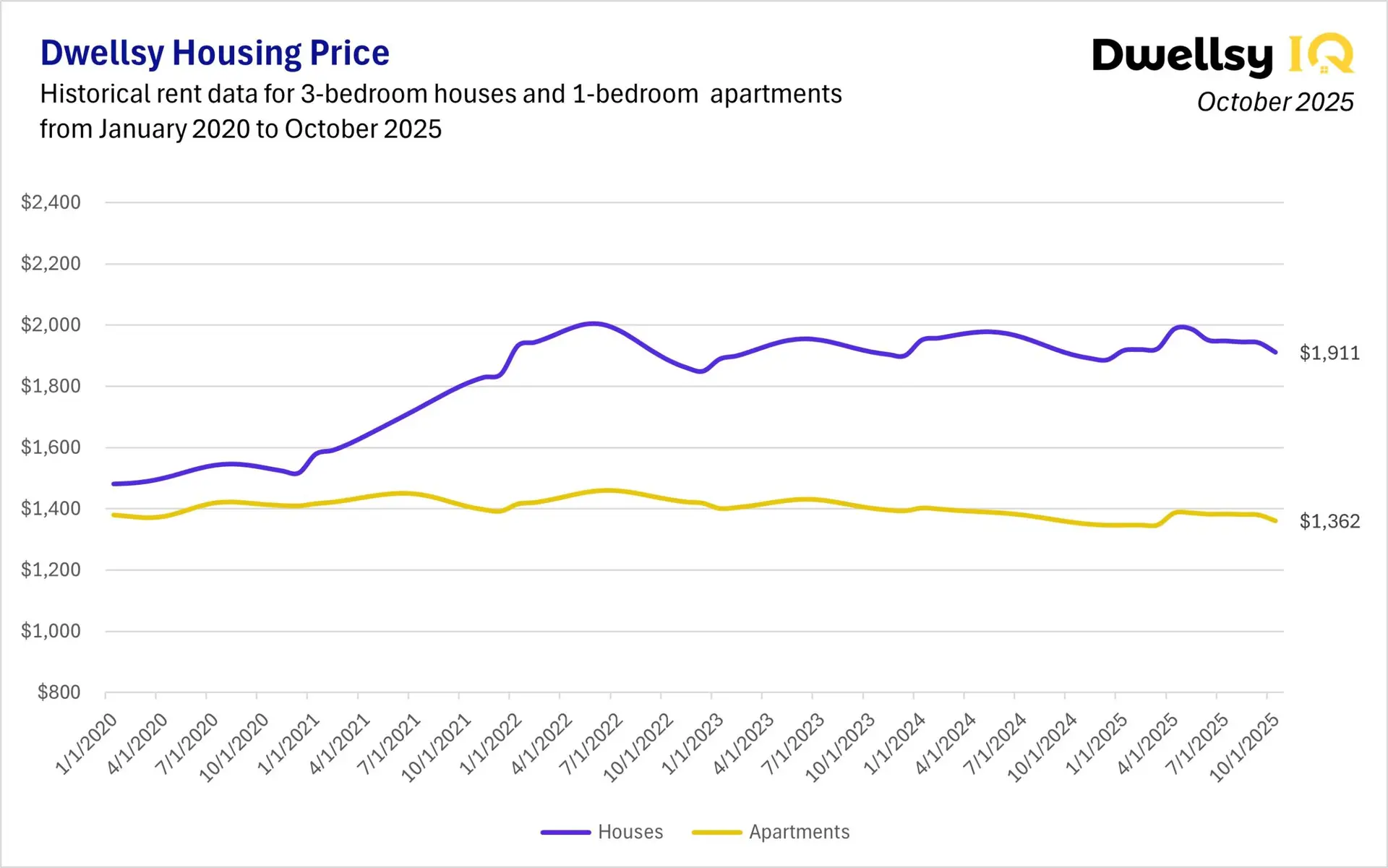If you’ve ever found yourself needing access to the cash tied up in your property, but you hate the idea of giving up control, a sale-leaseback can look pretty appealing. Many owners – especially business owners – get so focused on that initial boost of liquidity that they miss what really counts long-term: how ongoing lease payments are set up. That’s where rental data makes the difference. The more you know about your local rental market, the better equipped you are to structure deals that work for you.
When you understand rental data – really understand it – you’re no longer going through the motions. You become the negotiator with an edge, the one asking for what your property is truly worth. I’ll walk you through how you can use market intelligence so you can put yourself in that position, too.
What is Leaseback?
Leaseback is a financial arrangement that allows property owners to access liquidity while still using their asset. In other words, a leaseback lets you sell your property but continue operating in it under a lease agreement with the new owner. The long-term success of a leaseback depends on how lease payments are structured.
For homeowners, especially retirees with lots of home equity, this approach lets you tap into your house’s value without taking out a new loan or moving out of a neighborhood you love.
For businesses, a leaseback means you get the cash you need, but your team keeps operating like nothing’s changed.
Types of Leaseback Arrangements
What is a residential leaseback?
On the residential side, the conversation often starts with people who are “house rich, cash poor.” Maybe you’ve watched your home appreciate, but now you need resources for medical bills, family support, even bucket-list travel. Sell and leaseback can provide those funds while letting you stay right where you want to be. This also works for vacation houses, where owners sell to an investor but keep using the place for part of the year.
Developers sometimes use leasebacks for new condos or homes: they’ll offer a guaranteed tenant for a few years, which helps both the developer and the investor looking for a stable income stream.
What is a commercial leaseback?
Most of the big leaseback deals you hear about are on the commercial side. Businesses sell their facilities, gain working capital, and sign long leases so they can keep operating without disruption. In other words, a commercial leaseback lets a company convert real estate into capital while still using the property through a long-term lease agreement. This structure provides stability, reduces relocation costs, and ensures the business continues to run in the same location.
It’s not all about rates going up either. The best contracts consider what’s realistic for the market: sometimes that means fixed annual increases, sometimes adjustments based on what similar properties are renting for, sometimes tying things to the Consumer Price Index. The most successful deals are structured so both sides know what to expect.
What is a build-to-suit leaseback?
Here’s where things get interesting. If a tenant knows exactly what they need, a developer can build a property to those specs – and the tenant agrees upfront to lease it once it’s done. This often happens with specialty spaces like medical offices or senior living. The risk for the builder drops, and the future tenant gets a custom solution without laying out all the cash for construction.
What’s the difference between a residential and a commercial leaseback?
Residential leasebacks usually involve individuals or families, often retirees, who have owned their homes for decades. Typically, the lease terms are shorter, maybe 5 to 15 years, and there might be an option to buy the property back later on, which is a nice safety net for anyone not quite ready to let go for good.
Commercial leasebacks are more about selling a building – maybe it’s an office, a warehouse, or a hotel – and then signing a long-term lease that might run 10, 15, even 25 years. These deals work well for companies that want stability and predictability, with many leases including built-in rent increases so everyone stays protected as the market changes.
Leaseback companies in the US
Both large public REITs and smaller private firms are active in the leaseback space. Companies like Realty Income and W.P. Carey focuses on net lease commercial deals, typically prioritizing stable tenants and long-term agreements. On the residential side, Sell2Rent helps homeowners turn equity into cash while continuing to live in their homes. Some residential programs are structured as short-term arrangements with repurchase options, while others closely mirror the commercial leaseback model.
How to select the right leaseback company
The partner you choose matters a lot. The best results come when you work with someone who knows your property type inside and out. Check their track record, make sure they have the financial stability to handle hiccups, and see how flexible they are with lease terms and after-sale relationships. Good partners keep you informed, help you anticipate market shifts, and want the deal to work for both of you.
How rental data maximizes your leaseback income?
Market-Rate Optimization
It’s easy to settle for whatever lease rate is offered, especially if you’re focused on getting cash fast, but watching past the surface can lead you to stronger positions. The secret is to dig into the data to see what similar places are going for, then using that to back up your negotiations.
Location, property condition, timing, and others are important pieces. Sometimes a property looks expensive compared to others on the market, but a closer look at rental trends or amenities justifies the higher rate.
Long-term trends, like steady year-over-year rent growth, can also give you the confidence to push for better escalation clauses, not just for today but for the years ahead.
Market Intelligence in leaseback negotiations
In leaseback agreements, data is your strongest bargaining tool. Market intelligence – covering vacancy rates, rent growth, and seasonal demand – can give property owners and investors the leverage they need when structuring leaseback terms. For example, in markets with low vacancy and high demand, sellers are in a stronger position to negotiate higher rents or more favorable leaseback clauses. Even seasonality matters: timing a leaseback deal during a demand upswing can directly improve financial outcomes.
Leaseback strategies also require forward-looking flexibility. Because markets can shift rapidly, clauses that allow for renegotiation or rent adjustments help ensure leaseback agreements remain aligned with real-time market conditions. With continuous monitoring of rental market data, owners and investors can anticipate changes, revisit lease terms when necessary, and protect long-term profitability.
Conclusion
Rental data, when used thoughtfully, has the power to turn an average sale-leaseback into a strong, reliable income stream for years to come, and this applies to both individual owners and big firms.
The smartest owners build relationships with data-savvy partners, stay flexible, and monitor the rental market closely. Whether you’re just starting to think about leaseback or renegotiating a long-standing one, the time invested in understanding your market will pay off, often more than you expect.
FAQ
What is rental data, and why is it important?
Rental data includes market trends, rental prices, and occupancy rates, providing insights to optimize property performance. Accurate rental data helps you set competitive rates, reduce vacancies, and improve tenant satisfaction.
What is leaseback, and how does it work?
Leaseback is an agreement where a property owner sells their property and leases it back from the buyer. It provides immediate cash flow while allowing the owner to continue using the property under agreed terms.
How can rental data support leaseback decisions?
Rental data helps assess market demand, potential rental income, and long-term ROI, ensuring leaseback agreements are aligned with your financial goals and market conditions.
Can your solutions provide real-time rental data insights?
Yes, our platform delivers real-time rental market insights, ensuring you have up-to-date information to make data-driven decisions for pricing, marketing, and leaseback opportunities.
How do leaseback agreements benefit property owners?
Leaseback agreements provide liquidity while allowing owners to maintain operational control of the property. They are ideal for businesses or investors looking to optimize cash flow without losing property access.
Q10: How do I get started with your rental data and leaseback solutions?
You can start by exploring leaseback opportunities with Sell2Rent. Their platform makes it simple for property owners to access leaseback options. From there, you can layer in our rental market data to better understand pricing, vacancy rates, and demand trends, which gives you the insights needed to negotiate stronger terms and maximize the value of your leaseback strategy.



